Abstract
The photoformation of magnesium-porphyrin cations (P+) at a single lipid bilayer-water interface can pump lipophilic borate anions completely across the lipid bilayer and causes an actual reversal of the photovoltage. The system consists of a lipid bilayer containing magnesium octaethylporphyrin, an aqueous or interfacial electron acceptor on one side, and chloro- or fluoro-substituted tetraphenylborate in both aqueous electrolyte solutions. With 1-micros pulsed illumination, an immediate positive photovoltage is observed, which decreases on the microsecond and millisecond time scales. On the time scale of seconds, as the P+ cation concentration decays in reverse electron transfer, the voltage swings negative to a value almost equal to its initial value and finally decays with a half-time (approximately 20 s) longer than the time constant of the system (approximately 5 s). Thus, an ion gradient across the membrane is formed, trapped by the nonlinear relation between ion mobility and ion concentration. Continuous light illumination confirms that negative charge moves in the direction opposite that of the initial photoinduced electron transfer. Steady-state measurements indicate an ion pumping efficiency of approximately 30%. This simple mechanism may be a progenitor of photobiological ion pumps.
Full text
PDF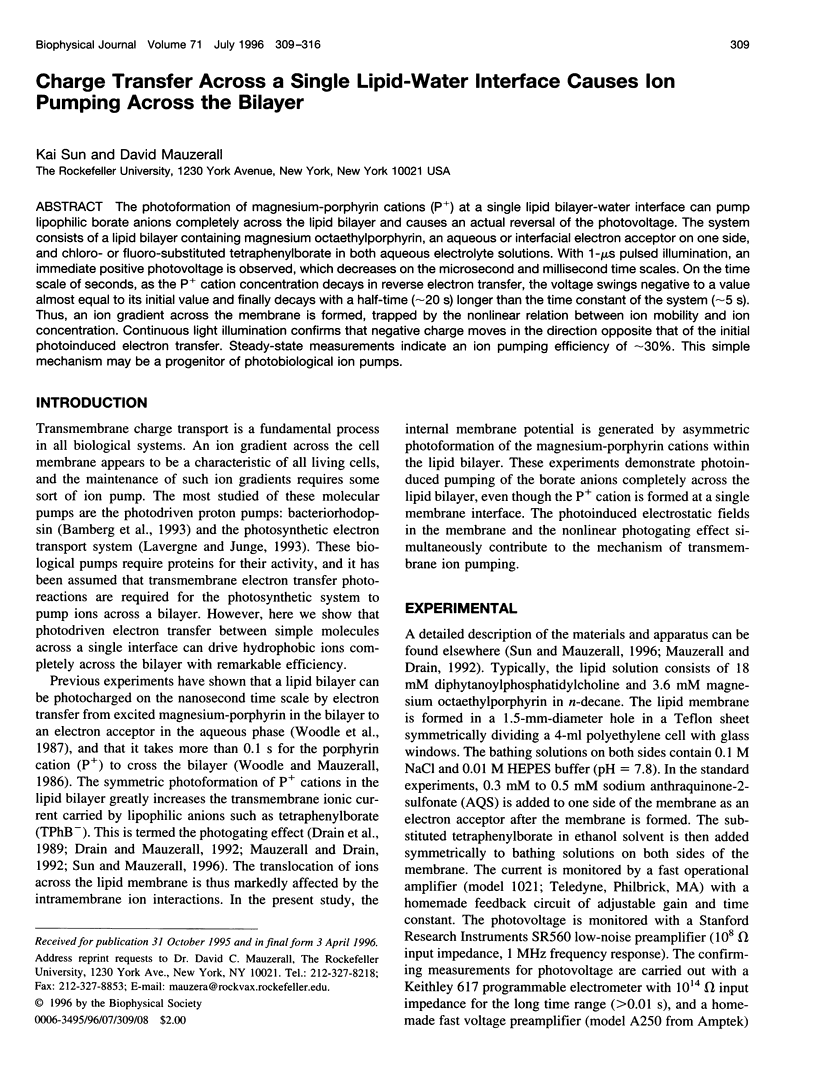
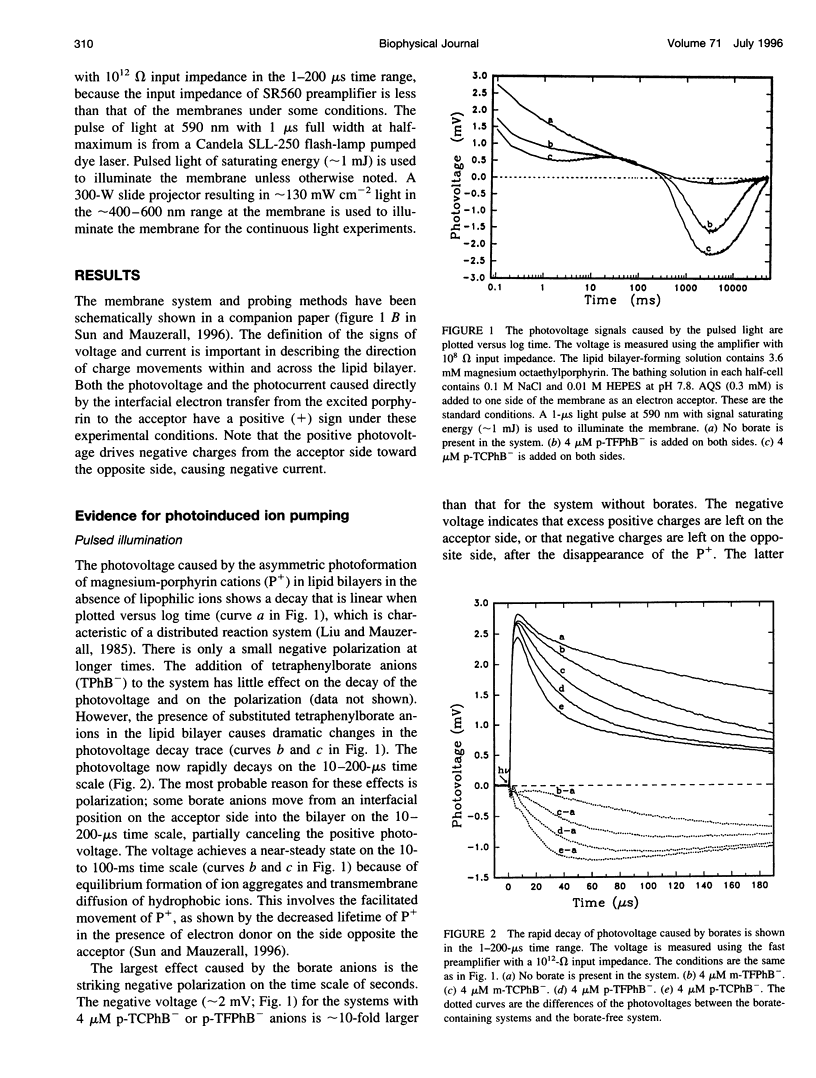
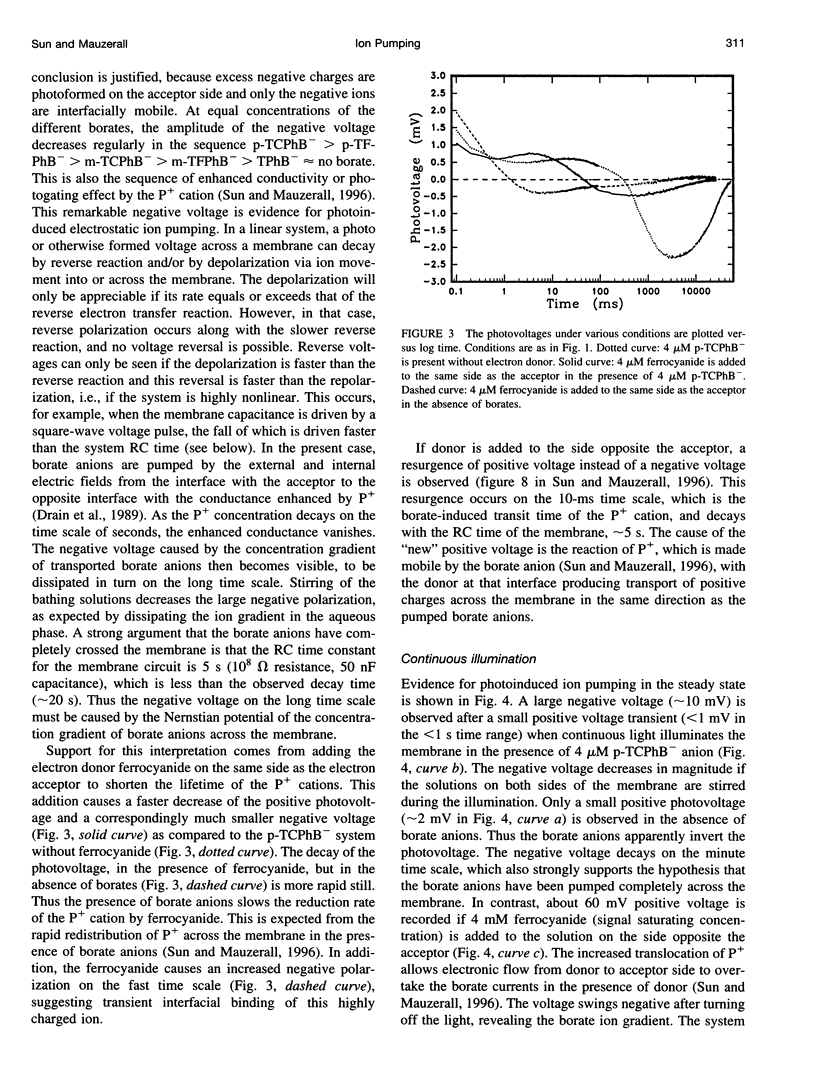
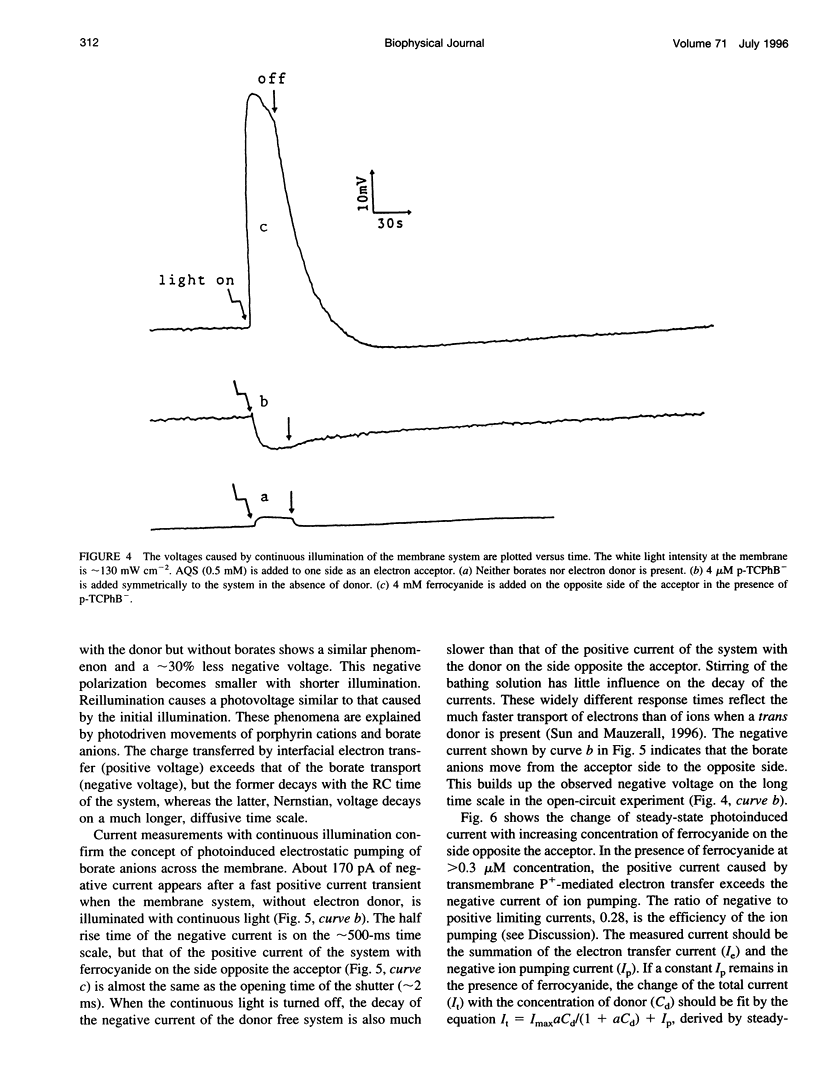

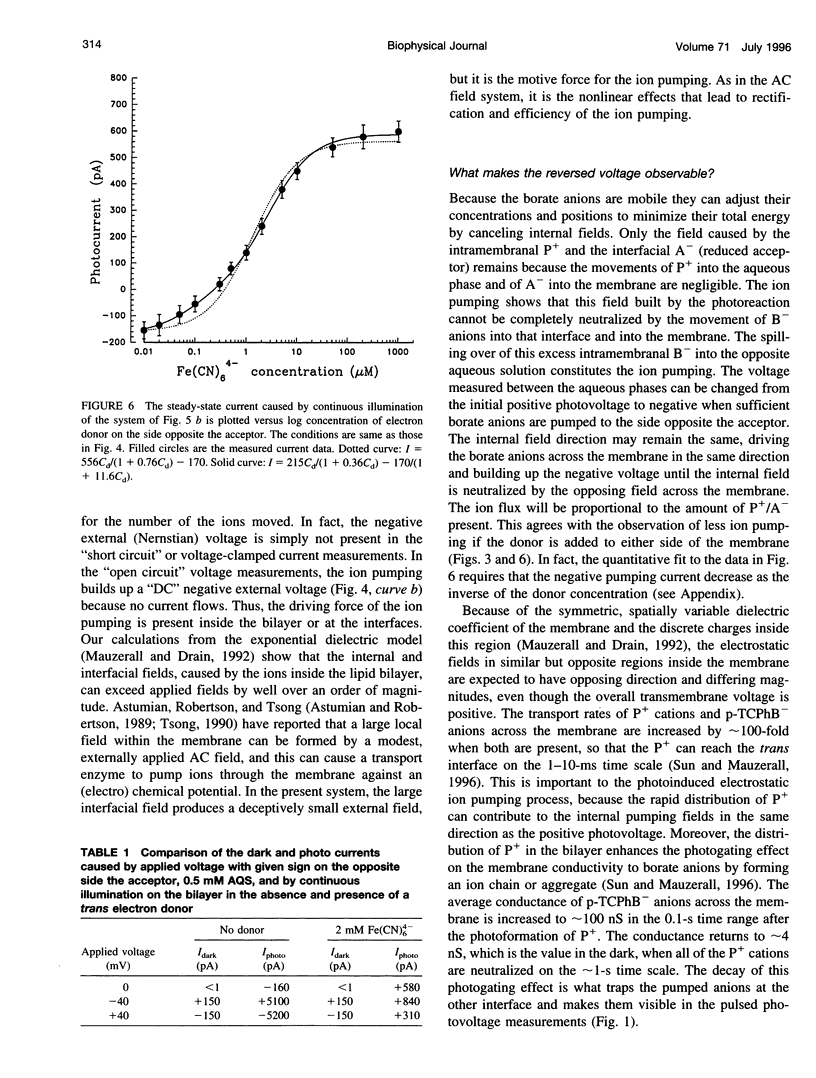
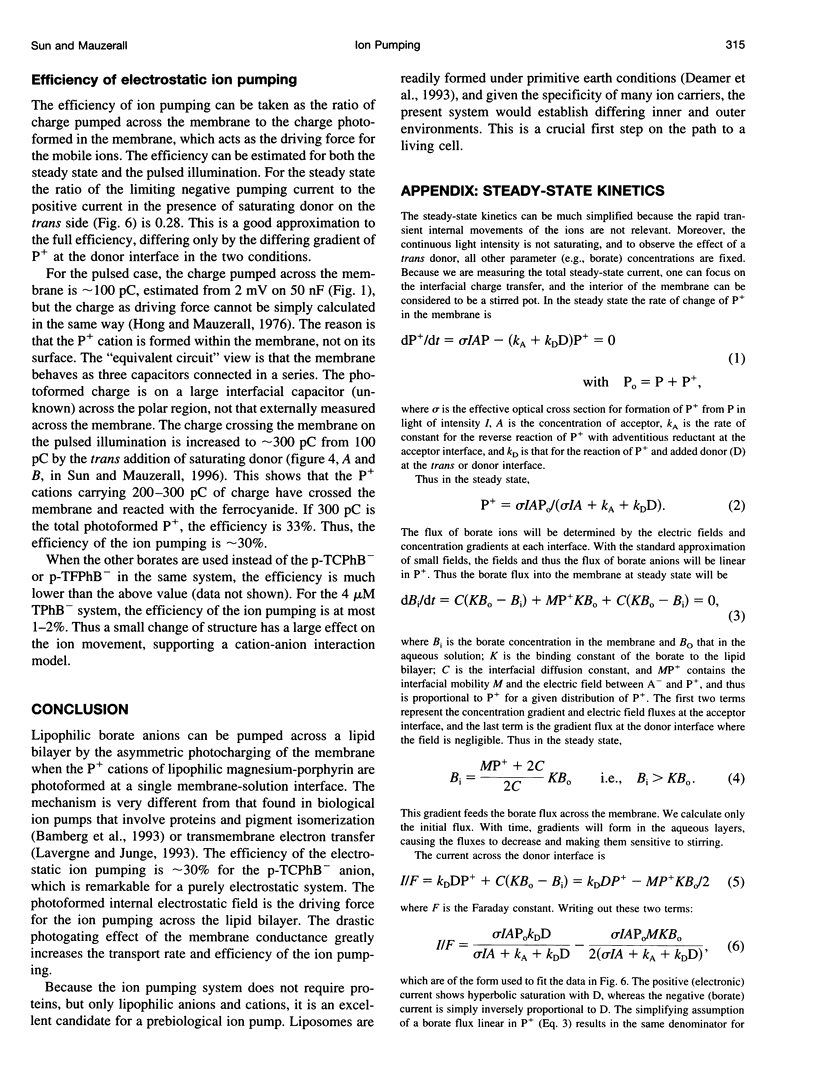
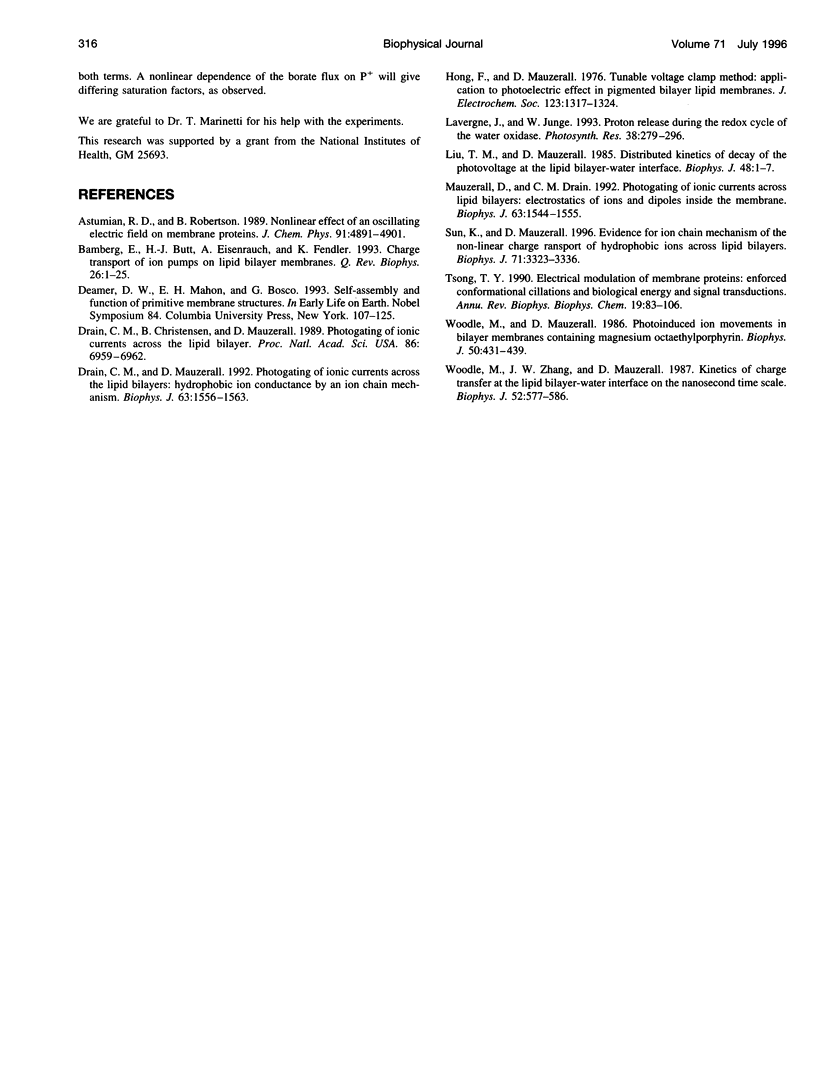
Selected References
These references are in PubMed. This may not be the complete list of references from this article.
- Bamberg E., Butt H. J., Eisenrauch A., Fendler K. Charge transport of ion pumps on lipid bilayer membranes. Q Rev Biophys. 1993 Feb;26(1):1–25. doi: 10.1017/s0033583500003942. [DOI] [PubMed] [Google Scholar]
- Drain C. M., Christensen B., Mauzerall D. Photogating of ionic currents across a lipid bilayer. Proc Natl Acad Sci U S A. 1989 Sep;86(18):6959–6962. doi: 10.1073/pnas.86.18.6959. [DOI] [PMC free article] [PubMed] [Google Scholar]
- Drain C. M., Mauzerall D. C. Photogating of ionic currents across lipid bilayers. Hydrophobic ion conductance by an ion chain mechanism. Biophys J. 1992 Dec;63(6):1556–1563. doi: 10.1016/S0006-3495(92)81739-3. [DOI] [PMC free article] [PubMed] [Google Scholar]
- Liu T. M., Mauzerall D. Distributed kinetics of decay of the photovoltage at the lipid bilayer-water interface. Biophys J. 1985 Jul;48(1):1–7. doi: 10.1016/S0006-3495(85)83755-3. [DOI] [PMC free article] [PubMed] [Google Scholar]
- Mauzerall D. C., Drain C. M. Photogating of ionic currents across lipid bilayers. Electrostatics of ions and dipoles inside the membrane. Biophys J. 1992 Dec;63(6):1544–1555. doi: 10.1016/S0006-3495(92)81738-1. [DOI] [PMC free article] [PubMed] [Google Scholar]
- Tsong T. Y. Electrical modulation of membrane proteins: enforced conformational oscillations and biological energy and signal transductions. Annu Rev Biophys Biophys Chem. 1990;19:83–106. doi: 10.1146/annurev.bb.19.060190.000503. [DOI] [PubMed] [Google Scholar]
- Woodle M. C., Mauzerall D. Photoinitiated ion movements in bilayer membranes containing magnesium octaethylporphyrin. Biophys J. 1986 Sep;50(3):431–439. doi: 10.1016/S0006-3495(86)83479-8. [DOI] [PMC free article] [PubMed] [Google Scholar]
- Woodle M., Zhang J. W., Mauzerall D. Kinetics of charge transfer at the lipid bilayer-water interface on the nanosecond time scale. Biophys J. 1987 Oct;52(4):577–586. doi: 10.1016/S0006-3495(87)83247-2. [DOI] [PMC free article] [PubMed] [Google Scholar]


